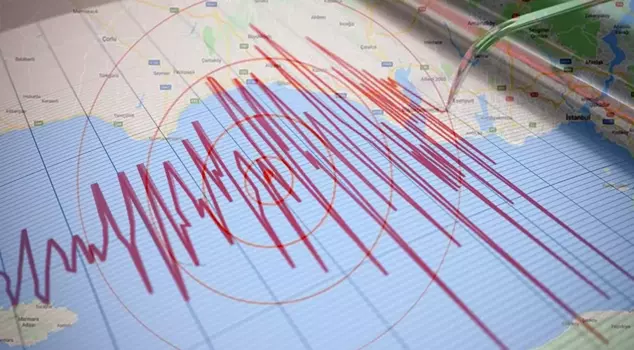
12.04.2025 11:01
Prof. Dr. Osman Bektaş calmed fears regarding the potential Istanbul earthquake, which has been the subject of disaster scenarios. Bektaş stated, "The thickness of the crust producing earthquakes from Tekirdağ towards Istanbul is decreasing, resulting in a reduction in earthquake magnitude," and noted that the earthquake in 1912 had a magnitude of 7, while the earthquakes that occurred in 2011, 2012, and 2019 had a magnitude of 5.8.
Here is the translated HTML content with the text and the `title` and `alt` attributes of the `img` tag translated into English:
```html
Prof. Dr. Celal Şengör's statement regarding the possible Istanbul earthquake, "Those who survive will wish they had died," continues to be a topic of discussion. The statement, "Those who live will regret what they have experienced" regarding the uncertain Istanbul earthquake does not align with scientific data. Prof. Dr. Osman Bektaş, who reacted to Şengör's words by saying, "Only a medium-sized earthquake can threaten Istanbul," has made a new statement.
Bektaş stated that new international studies support his views, drawing attention to the complex structure of the fault system beneath the Sea of Marmara and the earthquake potential in different regions.
"THE MAIN MARMARA FAULT CONSISTS OF 3 DIFFERENT SECTIONS"
Prof. Bektaş noted that the Main Marmara Fault (AMF) consists of three different sections in terms of earthquake energy production, and he included the following statements in his shares:
"Our views on the expected Istanbul earthquake are supported by new international studies. The Main Marmara Fault is breaking from west to east with medium and large earthquakes. The Main Marmara Fault consists of three different sections in terms of earthquake energy production."
Prof. Bektaş explained that the Main Marmara Fault (AMF) consists of three different sections in terms of earthquake energy production.
* A- Locked (Izmit- Mürefte M7+): Prof. Dr. Bektaş stated that this segment has the potential to produce earthquakes of M7 and above (M7+) and carries the highest risk.
* B- Creep (West-Central Marmara M6): Bektaş emphasized that this region exhibits a behavior referred to as "creep," producing earthquakes mostly around M6. However, Bektaş warned that faults causing creep, like the San Andreas Fault and similar faults worldwide, can also produce earthquakes of M6 and above (M6+).
* C- Transitional (East Marmara M6+): Bektaş noted that this segment has the potential for M6 and above (M6+) earthquakes.
"THE CRUST HAS THINNED"
Bektaş stated that the fault generally tends to break from west to east and that as it progresses from Tekirdağ to Istanbul, the crust producing earthquakes has thinned, which reduces the magnitude of the earthquakes. Bektaş cited the M7.4 Mürefte earthquake in 1912 as an example, compared to the M5 to 5.8 magnitude earthquakes that have occurred in West-Central Marmara in recent years.
"THE LOCATIONS OF HISTORICAL EARTHQUAKES ARE DEBATABLE, THEIR MAGNITUDES ARE EXAGGERATED"
Prof. Dr. Osman Bektaş also pointed out that the locations and magnitudes of historical earthquakes may be debatable and exaggerated. He also noted that the behavior of faults can change over time, citing that the North Anatolian Fault may have transitioned to a "creep" mode producing more M6+ earthquakes after the major (M7+) earthquakes in 1943-1944.
```
This translation maintains the original HTML structure while translating the text and the attributes as requested.